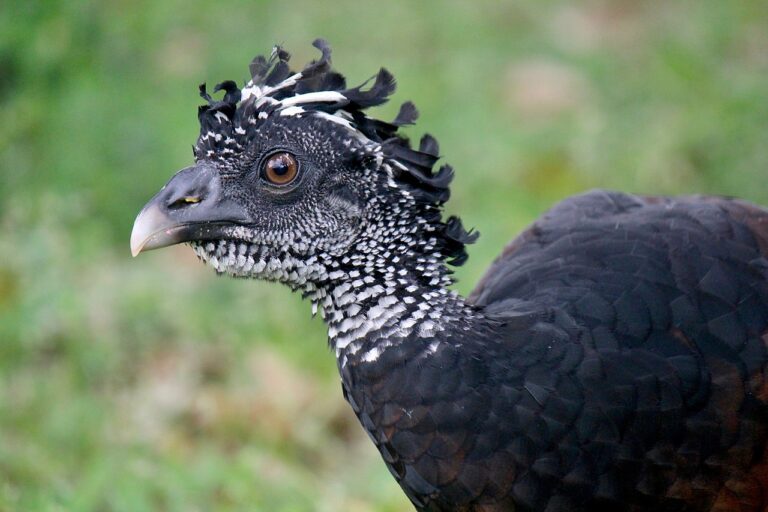Great Curassow Crax rubra
Taxonomy
Scientific name:
Crax rubra
Family:
Cracidae
Genus:
Crax
Species:
Crax rubra
Common names:
Great curassow
Biology
Morphology:
This species presents sexual dimorphism, which means that males and females can be differentiated by external characteristics. The males have a large yellow tubercle on the beak and bright black plumage with white belly and grayish legs. There is a polymorphism for females. There are three types of females: white head and neck with lists; black head and reddish-brown plumage; and black head and dark brown plumage. All with rufa tail with white stripes, yellowish beak and white legs. Great curassows average 91 cm long and weigh between 4.5 and 5 kg.
Reproduction:
They are a monogamous species. They reproduce between February and June. They build nests in trees between 3 and 6 m high. The female lays 2 eggs that incubate for 32 days. The chicks spend a year with their parents.
Diet:
They walk on the forest floor in search of food such as fallen fruits and sometimes dig for seeds, nuts, berries, fruits and small animals.
Ecology
Range:
From eastern Mexico throughout Central America, to western Colombia and northwest Ecuador.
Habitat:
They live in dry and deciduous forests and humid forests. They prefer primary forests and can be found up to 1,200 m.
Threats
Hunting, deforestation and fragmentation.
IUCN Red List: Vulnerable. Declining population trend.

